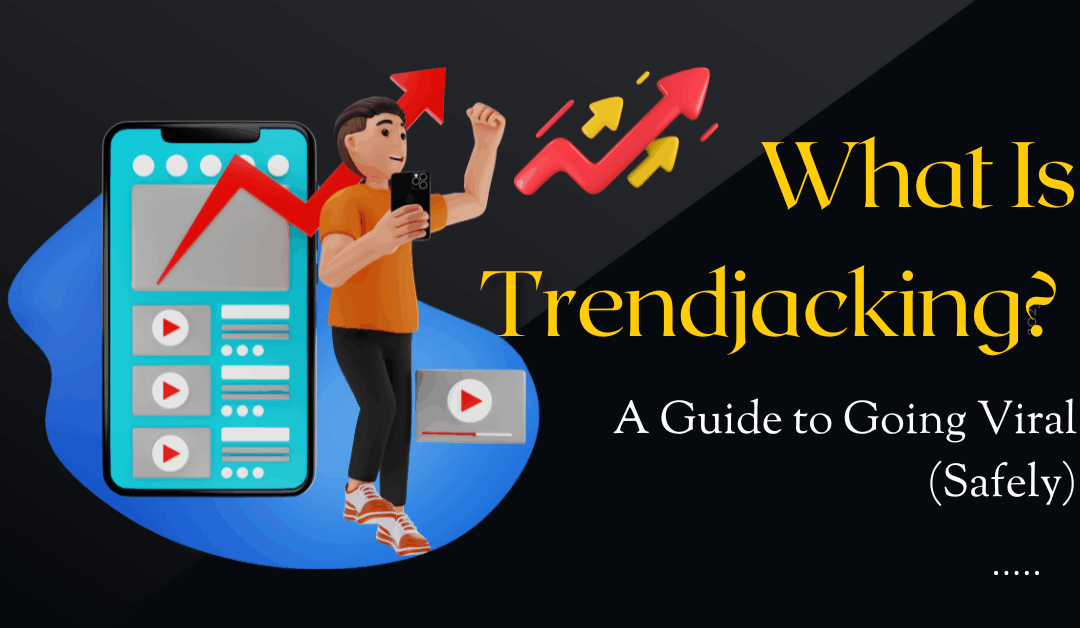What Is Trendjacking? A Complete Guide for Modern Brands
Ever see a brand post a hilarious meme that’s everywhere on your timeline? Or maybe they chimed in on a viral cultural moment with the perfect, witty comment?
That’s not just luck; it’s a smart and agile marketing strategy called trendjacking.
When done right, it can flood your brand with engagement, reach new audiences, and make you look incredibly relevant. When done wrong, it can be a PR nightmare.
This guide breaks down what trendjacking is, how to do it right, and how to avoid the common pitfalls.
What Is Trendjacking?
Trendjacking is the art of strategically inserting your brand into a trending conversation, meme, event, or news story to boost your visibility and relevance.
Instead of trying to create a viral moment from scratch (which is incredibly difficult), you’re tapping into the massive wave of attention that already exists. It’s the digital evolution of “newsjacking”—moving at the speed of social media.
The goal isn’t just to be seen; it’s to connect with your audience in a way that feels authentic, human, and timely.
How to Master Trendjacking: A 3-Step Guide
You can’t just jump on every trend. Successful trendjacking requires a mix of speed, creativity, and careful judgment.
Step 1: Identify the Trend (Early)
A trend’s lifespan can be as short as 24 hours. You have to be fast.
- Use social listening: Monitor trending topics on X (formerly Twitter), TikTok’s “For You” page, and Instagram Reels.
- Check Google Trends: See what topics are suddenly spiking in search interest.
- Empower your team: Your social media manager should have the autonomy to spot and flag opportunities immediately.
Step 2: Ask These 3 Questions Before You Post
This is the most critical step. Before you hit “publish,” your team must answer “yes” to these questions:
- Is It Relevant? Does this trend make any sense for our brand’s voice and audience? A B2B financial services firm joining a silly dance trend will likely feel forced and awkward. A fast-food brand? That makes more sense.
- Is It Safe? Do you fully understand the trend’s origin and context? Many memes have hidden meanings or are tied to controversial or sensitive topics. Jumping in without doing your homework is how brands get in trouble.
- Can We Add Value? Are you just reposting the meme, or are you adding your brand’s unique, clever spin? The best trendjacking adds to the conversation. Simply copying makes your brand look like a follower, not a leader.
Step 3: Execute Quickly and Authentically
If a trend passes the test, it’s time to act.
- Be Fast: Don’t wait for three rounds of internal approvals. By then, the trend will be over.
- Be Authentic: Your post should sound like it’s coming from your brand, not like a desperate attempt to be “cool.”
- Be High-Quality: Even if it’s a quick, text-based tweet, it should be clever and on-brand.
Examples of Trendjacking: The Good & The Bad
Using examples is the best way to understand this strategy.
The Good: Oreo’s Super Bowl Tweet
This is a classic example. During the 2013 Super Bowl blackout, the lights went out in the stadium. Within minutes, Oreo’s team tweeted a simple graphic with the caption: “You can still dunk in the dark.”
- Why it worked: It was instant, clever, perfectly on-brand, and added a moment of shared humor to a massive, real-time event.
The Good: Duolingo on TikTok
The Duolingo owl mascot (Duo) is a great example of a long-term trendjacking strategy. The brand’s social team has created an “unhinged” personality for Duo, who relentlessly jumps on every weird TikTok sound and meme format.
- Why it worked: It’s completely authentic to the quirky brand personality they’ve built. Their audience expects and loves this behavior.
Final Verdict: Is Trendjacking Worth the Risk?
Yes, but only if you have a clear process.
Trendjacking is a high-risk, high-reward strategy. A single tone-deaf post can damage your brand’s reputation. But a single, brilliant post can earn you more organic reach and brand love than a $100,000 ad campaign.
The key is to have strong brand guidelines and to trust your team’s judgment. And remember the golden rule:
When in doubt, sit it out.
It’s always better to miss one viral moment than to post something you’ll spend the next week apologizing for.

